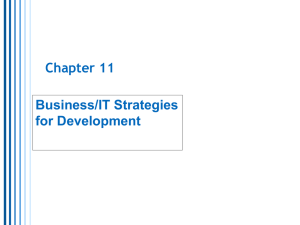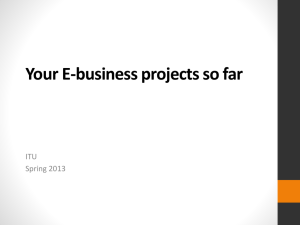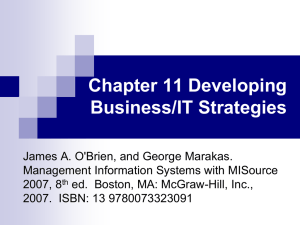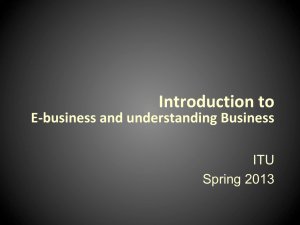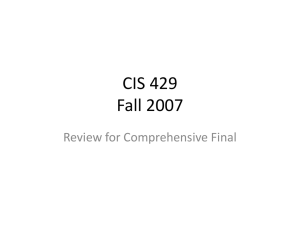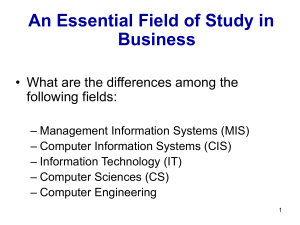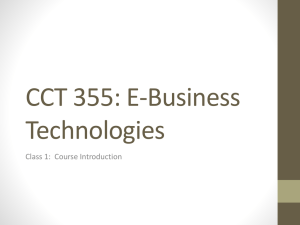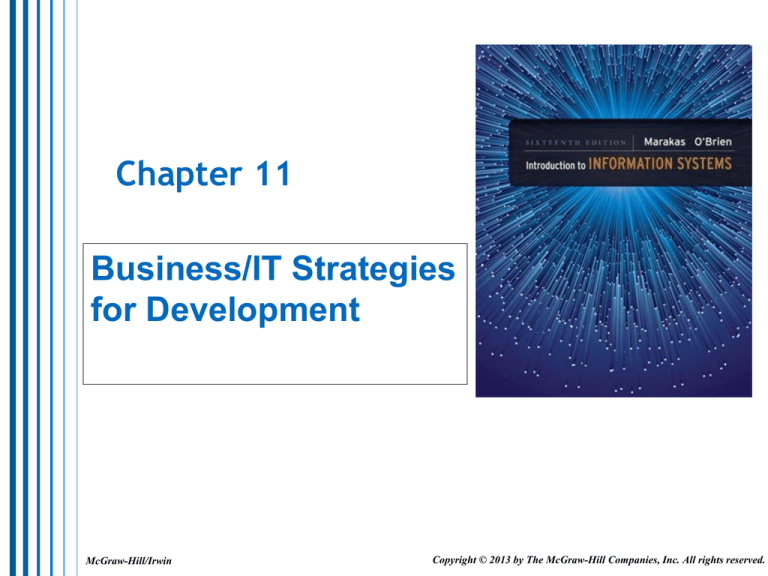
Chapter 11
Business/IT Strategies
for Development
McGraw-Hill/Irwin
Copyright © 2013 by The McGraw-Hill Companies, Inc. All rights reserved.
Learning Objectives
Discuss the role of planning in the business use
of information technology, using the scenario
approach, and planning for competitive
advantage as examples.
Discuss the role of planning and business
models in the development of business/IT
strategies, architectures, and applications.
Identify several change management solutions
for end-user resistance to the implementation
of new IT-based business strategies and
applications.
11-2
Section 1
IT Planning Fundamentals
11-3
I. Introduction
Simply knowing the importance and structure of ebusiness is not enough. A Plan is needed to transition
from an old business design to a new e-business
design.
11-4
II. Organizational Planning
Enterprise-wide plans are required to
introduce IT/IS-based solutions to the entire
firm.
Strategic Planning – develop a firm’s mission,
goals, policies
Tactical Planning – develop objectives,
procedures, rules, schedules, budgets
Operational Planning – implement/control
day-to-day operations
11-5
III. The Scenario Approach
A less rigid but more realistic strategic
planning methodology; combine known
facts about the future with plausible
alternatives
Knowledge:
Trends – Things we think we know
something about
Uncertainties – Elements we consider
uncertain or unknowable
11-6
III. The Scenario Approach
Components of an Organizational
Planning Process
11-7
III. The Scenario Approach
Strategic Visioning Questions for e-Business
11-8
III. The Scenario Approach
Converging Trends in Strategic Business/IT
Planning
11-9
Risk Assessment and Mitigation
What are the four types of IT risks listed?
Describe each risk.
What could a firm do to mitigate each risk?
11-10
IV. Planning for Competitive
Advantage
Evaluation of potential benefits/risk of using IT
for competitive advantage
SWOT ( strengths, weaknesses, opportunities,
threats) Analysis – evaluate impact of each
possible strategic opportunity
Strengths – core competencies and resources
Weaknesses – areas of substandard performance
Opportunities – potential for new markets or
innovation
Threats – potential for losses
11-11
Bristow Helicopters: Technology-Supported
SWOT and Much More
What needs did Bristow have?
What key goal is identified?
What software technology was used to make
these changes?
How did the software work to accomplish this?
11-12
V. Business Models and Planning
Conceptual framework of how a business can
deliver value to customers at a cost and still
turn a profit
11-13
V. Business Models and Planning
Questions for All Business Models
11-14
V. Business Models and Planning
Questions for e-Business Models
11-15
Iridium Satellite: Finding the Right
Business Model
What product/market did Iridium originally
service?
What product/market have they moved to?
Why is this different from the way they
previously competed?
11-16
VI. Business/IT Architecture Planning
Plans on how to use IT to support customer
value and business value goals
Strategic Development – business strategies
that support a firm’s business vision
Resource Management – strategic plans for
managing or outsourcing a firm’s IT resources
Technology Architecture – strategic IT choices
reflecting an IT architecture that supports a
firm’s e-business and other IT initiatives
11-17
VI. Business/IT Architecture Planning
Information Technology Architecture –
blueprint that contains:
Technology Platform – complete infrastructure
supporting strategic use of IT for e-commerce and
business/IT applications
Data Resources – databases and data warehouses
Application Architecture – business applications
IT Organization – organizational structure of the IS
function within a firm
11-18
VI. Business/IT Architecture Planning
Balanced Scorecard – measuring a company’s activities
in terms of its visions and strategies; not based on
proven economic theory or decision sciences
Financial Perspectives – measures of financial performance
Customer Perspective – measures directly impacting
customers
Business Process Perspective – measures performance of key
business processes
Learning and Growth Perspective – measures the firm’s
learning curve
11-19
VII. Identifying Business/IT Strategies
To optimize strategic impact, firms must
continually assess the value of IT/e-commerce
applications
Cost and Efficiency Improvements – low
internal/external connectivity and low use of IT
Performance Improvement in Business
Effectiveness – high internal but low external
connectivity, need to improve collaboration
Global Market Penetration – high external
connectivity and use of IT
Product and Service Transformation – extensively
networked internally and externally
11-20
e-Business Strategy Examples
Describe each example listed.
Discuss each example and how it could
be used in a particular business.
Identify businesses (not those listed)
that could utilize each example.
11-21
VIII. Business Application Planning
IT proposals for addressing strategic
business priorities and planning for
application development
Business/IT Architecture Planning –
combines strategic planning methods
(SWOT, etc.) with recent modeling and
development methodologies
11-22
VIII. Business Application Planning
E-Business Architecture Planning
11-23
KI: The Importance of Strategic Planning
Why is forming a strategic IT plan difficult at
most companies?
What was the problem at KI?
How has developing a strategic IT plan helped
the firm overall?
What pitfalls, resistance, and cultural issues
might have been stumbling blocks along the
way?
11-24
The Role of IT in Business Process Design
Why might IT personnel be in a better position
to see organizational needs than other
personnel?
Why would IT be in the right place to provide
solutions to these needs?
What organizational and cultural issues might
be stumbling blocks to adopting these
solutions?
11-25
Section 2
Implementation Challenges
11-26
I. Implementation
Carrying out the strategic plans developed in
the planning process
11-27
II. Implementing Information Technology
Moving to e-business involves major
organizational change
11-28
II. Implementing Information Technology
Impact and Scope of Business Change
Caused By IT Implementation
11-29
III. End-User Resistance and Involvement
New ways of doing things always generates
some resistance from those affected; end-user
involvement in the change process can help
minimize the resistance
11-30
III. End-User Resistance and Involvement
Obstacles to Knowledge Management
Systems
11-31
Société de Transport de Montréal: Smooth
Ride after a Bumpy Start
What problem did STM have?
Why did this problem occur?
How did the IT staff work to resolve this
problem?
What other issues/areas might this same
problem arise within?
Why would the same problem manifest
itself in other ares?
11-32
Understanding the Science Behind Change
What was the problem in IT at Blue
Cross?
What causes these problems?
How does understanding the problem
help?
How did Blue Cross address the
problem?
11-33
IV. Change Management
Managing organizational change is
important and can be difficult; people
are a major focus here
A Change Management Process – these 8
steps are just one way of visioning
change management
11-34
IV. Change Management
Key Dimensions of Change Management
11-35
DHL Express: The Challenges of Global
Change
What are the two extremes of the
pendulum for IT?
What as the problem at DHL?
What solution did DHL provide for this
problem?
How does this affect the IT department?
How does it affect DHL?
11-36
Reuters: Implementing Global Shared
Services
What problem did Reuters have, and
why?
What solution did they adopt?
Discuss the meaning of this solution.
How did this work out for Reuters?
11-37

